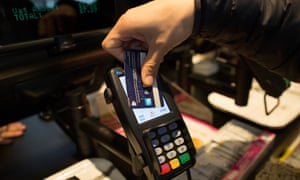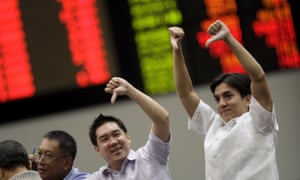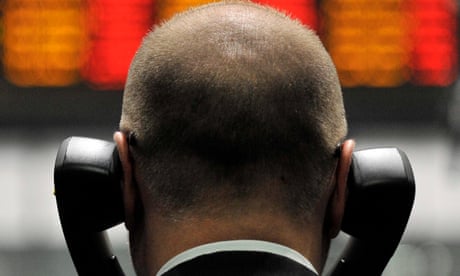1. Inflation, Disinflation, Hyperinflation, and Deflation:
a. Inflation: Inflation refers to the sustained increase in the general price level of goods and services in an economy over a period of time. When inflation occurs, each unit of currency buys fewer goods and services than it did before. Moderate inflation is considered normal in healthy economies as it can encourage spending and investment.
Example: If the inflation rate is 3%, a basket of goods that cost $100 last year will cost $103 this year.
b. Disinflation: Disinflation is a decrease in the rate of inflation. It means that prices are still rising, but at a slower rate compared to a previous period. It does not mean a decline in prices (deflation).
Example: If the inflation rate was 5% last year and is now 3% this year, it represents disinflation.
c. Hyperinflation: Hyperinflation is an extremely high and typically accelerating rate of inflation. In hyperinflationary situations, the value of a country's currency declines rapidly, leading to a loss of confidence in the currency.
Example: In a hyperinflationary economy, prices may double every few days, leading to a collapse of the country's monetary system.
d. Deflation: Deflation is the sustained decrease in the general price level of goods and services in an economy over time. It is the opposite of inflation and can be caused by a decrease in consumer demand or an increase in the supply of goods.
Example: If the inflation rate is -2%, a basket of goods that cost $100 last year will cost $98 this year.
2. Calculation of Inflation via Weighted Changes in Price Indices:
Inflation is commonly calculated using a price index, such as the Consumer Price Index (CPI) or the Producer Price Index (PPI). These indices measure changes in the price of a basket of goods and services over time. The steps to calculate inflation are as follows:
Select the Base Year: Choose a base year against which changes in prices will be measured. Usually, the base year index is set at 100.
Gather Price Data: Collect price data for a representative basket of goods and services.
Assign Weights: Assign weights to each item in the basket based on their relative importance in consumer spending. These weights represent the proportion of consumer spending allocated to each item.
Calculate Price Index: Calculate the price index for each period by dividing the total cost of the basket in that period by the total cost in the base year and multiplying by 100.
Calculate Inflation Rate: Calculate the inflation rate by comparing the price index of the current period with the price index of the base year, expressing the change as a percentage.
Example: Suppose the price index for the base year is 100 and the current year's price index is 110. The inflation rate would be (110-100)/100 * 100 = 10%.
3. Multiple Choice Questions (MCQs) on Inflation Indices:
What is the purpose of using a price index to measure inflation? a) To measure changes in the money supply b) To compare prices between different countries c) To track changes in the general price level over time d) To calculate changes in GDP
Answer: c) To track changes in the general price level over time.
Disinflation occurs when: a) Prices are increasing at a slower rate b) Prices are decreasing c) Prices are increasing at an accelerating rate d) Prices remain constant
Answer: a) Prices are increasing at a slower rate.
Hyperinflation is characterized by: a) A very low and stable inflation rate b) A high and stable inflation rate c) An extremely high and accelerating inflation rate d) Deflation
Answer: c) An extremely high and accelerating inflation rate.
The Consumer Price Index (CPI) measures changes in: a) The prices of goods and services purchased by businesses b) The prices of goods and services purchased by consumers c) The prices of goods and services produced by businesses d) The prices of capital goods
Answer: b) The prices of goods and services purchased by consumers.
Deflation occurs when: a) The rate of inflation is positive but low b) The rate of inflation is negative c) The rate of inflation is extremely high d) The rate of inflation is stable
Answer: b) The rate of inflation is negative.
4. Major Measures of Inflation in the UK and Differences:
In the UK, the major measures of inflation are:
Consumer Price Index (CPI): Measures changes in the prices of a basket of goods and services purchased by households. It is the primary indicator of consumer inflation.
Retail Price Index (RPI): Similar to CPI but includes mortgage interest payments, making it slightly higher than the CPI.
Producer Price Index (PPI): Measures changes in the prices of goods and services at the wholesale level.
Differences:
- CPI focuses on consumer goods, while PPI focuses on wholesale prices.
- RPI includes housing costs like mortgage interest payments, whereas CPI does not.
- RPI is typically higher than CPI due to the inclusion of housing costs.
5. Multiple Choice Questions (MCQs) on Inflation Index Numbers:
The Consumer Price Index (CPI) is used to measure changes in the prices of goods and services: a) Purchased by businesses b) Purchased by consumers c) Produced by businesses d) Purchased by the government
Answer: b) Purchased by consumers.
The Retail Price Index (RPI) differs from the Consumer Price Index (CPI) because it includes: a) Mortgage interest payments b) Business investment c) Producer prices d) Government expenditure
Answer: a) Mortgage interest payments.
Which inflation index is the primary indicator of consumer inflation in the UK? a) Consumer Price Index (CPI) b) Retail Price Index (RPI) c) Producer Price Index (PPI) d) Wholesale Price Index (WPI)
Answer: a) Consumer Price Index (CPI).
The Producer Price Index (PPI) measures changes in the prices of goods and services at the: a) Consumer level b) Wholesale level c) Retail level d) Government level
Answer: b) Wholesale level.
The Retail Price Index (RPI) is generally higher than the Consumer Price Index (CPI) because of the inclusion of: a) Taxes and duties b) Housing costs, such as mortgage interest payments c) Consumer durable goods d) Business investment
Answer: b) Housing costs, such as mortgage interest payments.


